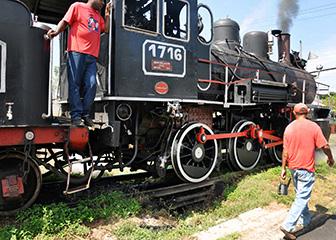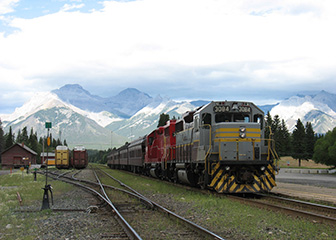How to Become a Train Engineer or Operator About this section

All train employees need mechanical ability.
Many rail companies require locomotive engineers to have a high school diploma or equivalent, although some companies do not have education requirements for rail yard workers. Train engineers and operators are trained on the job through company training programs.
Education
Some rail companies require a high school diploma or equivalent, especially for locomotive engineers. Other positions sometimes do not have education requirements.
Training
Locomotive engineers generally receive 2 to 3 months of on-the-job training before they can operate a train on their own. Typically, this training involves riding with an experienced engineer who teaches them the nuances of that particular train route.
During training, an engineer learns the track length, where the switches are, or any unusual features of the track. An experienced engineer who switches to a new route also has to spend a few months in training to learn the route with an engineer who is familiar with it.
In addition, railroad companies provide continuing education so that engineers can maintain their skills.
Rail yard engineers and signal and switch operators also receive on the job training, generally through a company training program. This program may last a few weeks to a few months, depending on the company and the complexity of the job.
Licenses
Some rail yard engineers drive large vehicles around the yard and must have a Commercial Driver's License (CDL). The qualifications for obtaining a CDL vary by state but generally include passing both a knowledge and a driving test. For more information about getting a CDL, contact the Federal Motor Carrier Safety Association.
Certification
Locomotive engineers must be certified by the Federal Railroad Administration (FRA). The certification, conducted by the railroad that employs them, involves a written knowledge test, a skills test, and a supervisor determining that the engineer understands all physical aspects of the particular route on which he or she will be operating.
An experienced engineer who changes routes must be recertified for the new route. Even engineers who do not switch routes must be recertified every few years.
At the end of the certification process, the engineer must pass a vision and hearing test.
Work Experience
Most locomotive engineers first work as conductors for several years. For more information, see the profile on conductors and yardmasters.
Advancement
Switch and signal operators can advance to become conductors or yardmasters.
Important Qualities
Communication skills. All rail employees have to be able to communicate effectively with each other to avoid accidents and keep the trains on schedule.
Decision making skills. When operating a locomotive, engineers must be able to make fast decisions to avoid accidents.
Hand-eye coordination. Locomotive engineers have to operate various controls while staying aware of their surroundings.
Hearing ability. To show that they can hear warning signals and communicate with other employees, locomotive engineers have to pass a hearing test conducted by their rail company.
Mechanical skills. All rail employees work with complex machines. Most have to be able to adjust equipment when it does not work properly. Some rail yard engineers spend most of their time fixing broken equipment.
Physical strength. Some rail yard engineers have to lift heavy equipment.
Visual ability. To drive a train, locomotive engineers have to pass a vision test conducted by their rail company. Eyesight, peripheral vision, and color vision may be tested.
In addition, locomotive operators must be at least 21 years of age and pass a background test. They also must pass random drug and alcohol screenings over the course of their employment.











